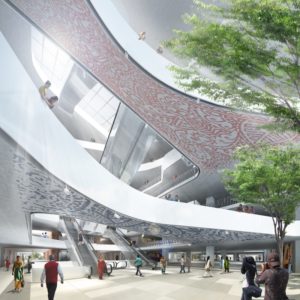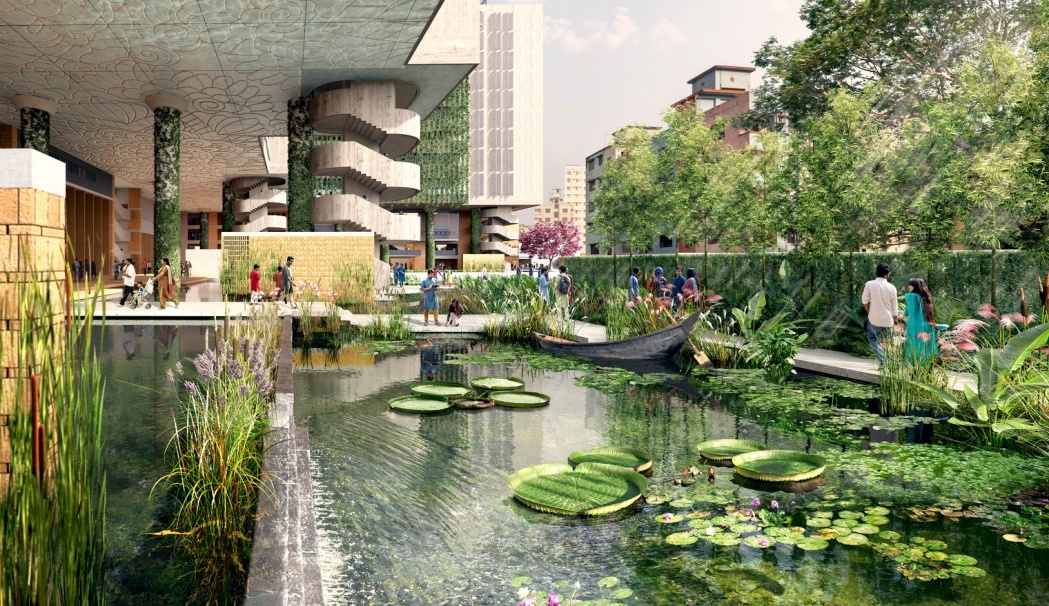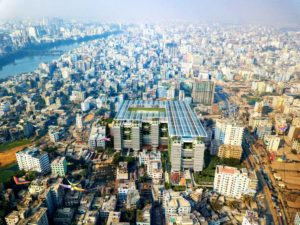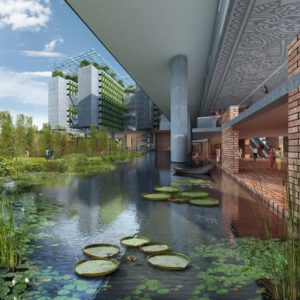The architects at WOHA have unveiled their latest images for the revitalization of the 5.3-acre university campus of their client—BRAC University—in Dhaka, Bangladesh. It’s a stunning example of transforming an ugly, unhealthy place into the exact opposite.
The redevelopment and redesign will turn a polluted, frequently-flooded barren area into a vibrant, green public park and inner-city campus. The project is scheduled to be completed in 2021.
Here’s what the architects say about the project:
Amongst the densest and harshest megalopolises in the world, Dhaka’s rapid urbanization and overcrowding has resulted in the displacement of the city’s water bodies, vegetation, open and civic spaces by buildings and industries.Sited on an urban lake, the vision is to present an innovative and sustainable inner city campus that exemplifies tropical design strategies in response to the hot, humid, monsoon climate of the region while demonstrating the sensitive integration of nature and architecture.
Drawing inspiration from the Bengal basin’s Sundarbans mangrove forest that have separate ecosystems above and below tidal level, the design strategy is to create two distinct programmatic strata.
 It will float the Academia above the lake and reveal a Campus Park below, thus reflecting the synergistic coexistence between mankind and mangrove.
It will float the Academia above the lake and reveal a Campus Park below, thus reflecting the synergistic coexistence between mankind and mangrove.
This approach minimizes the building’s footprint over the lake, and through the introduction of multiple elevated ground levels including a Student Forum and a rooftop recreational University Green.
This further maximizes space for facilities while opening up the ground level to activity generating interaction spaces and effective additional park land that creates an imageable milieu for a vibrant campus life.
At its heart, this is a campus set in a park – a lush green oasis offering much needed refreshment and inspiration under a canopy of learning.
Through perforating the building form with breezeways, porous facades and garden terraces, and by sculpting the building section to direct breezes to sheltered gathering spaces, the campus is designed to breathe.It will have cross ventilation and indirect natural daylighting, making tropical learning spaces without air-conditioning possible.
A cost effective and robust aesthetic that promotes the use of local materials, traditional crafts/skills and vegetation forms the building’s material palette.
Landscaping applied vertically and horizontally exemplifies the potential in multiplying greenery and open spaces within a dense, urban site and sets the direction that must be embraced to make Dhaka a modern, livable, sustainable and humane city.
All images courtesy of WOHA.



